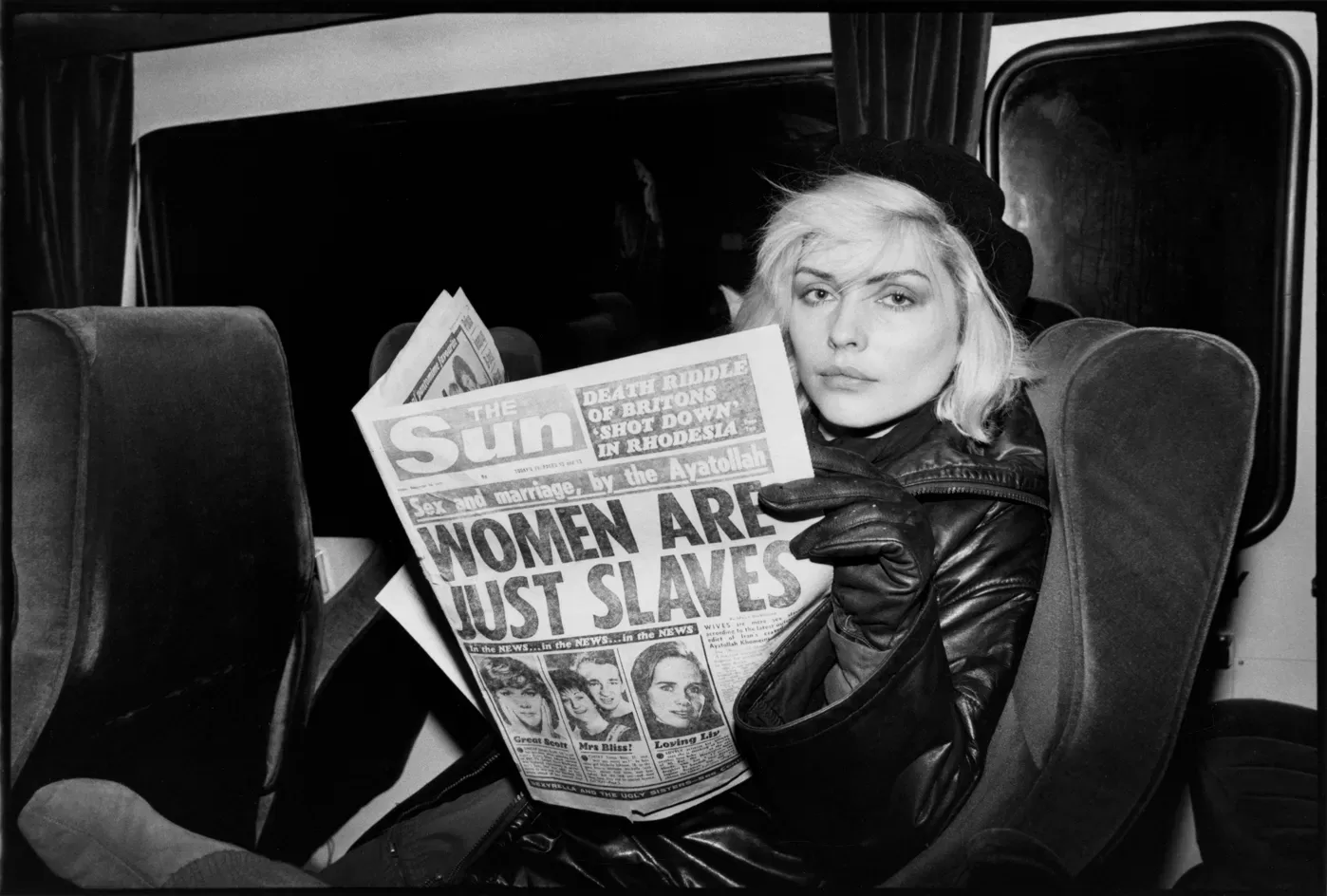How deep is the queen’s throat? Sam Moore on the diva phenomenon
0 min read
Sam Moore dives deep into the cultural heft of the diva – its comedy, tragedy and enduring mystique – from RuPaul to the V&A

Portrait of Debbie Harry, on view in the DIVA exhibition at the V&A, London. © Chris Stein, Rednight, Inc.
I’ve noticed a shift in how the references in RuPaul’s Drag Race work. As the show has gone on to become more of a cultural monolith – from the ‘All Stars’ spin-off to a seemingly endless number of international offshoots – it has become less interested in referencing other aspects of queer life, and has increasingly begun referencing itself. As if Drag Race has swallowed up the rest of queer pop culture and now has to eat its own tail.
The first time I watched the show was on a whim in the middle of undergrad; the theatre gays were referencing it and it sounded like a totally different language. I chose one episode from the middle of season 7 because John Waters was a guest judge. It didn’t click with me, and I left the show alone for five years. Now, I struggle to juggle the United Nations of Drag Race franchises, even as it continues to remake the culture of queerness in its own image. And this image, this culture, is one of referencing and remixes. One in which the past – whether it’s queer icons, fashion runways, or even the image of RuPaul herself – becomes pliable material.
On the top floor of ‘DIVA’, an exhibition at the V&A that tours through the fashions and personas of the women that defined this prickly, undefinable label, is a Bob Mackie dress. All red and gold, with tassels at the bottom of the garment, it gives the impression of a phoenix rising from the ashes – especially with the accompanying sketch. And while I wish I could say that the image of the phoenix is what’s interesting here, instead it’s an image of an image of the Mackie. There’s a small clip from season 15 of Drag Race in which contestant Luxx Noir London walks the runway in this dress. The runway theme: Night of 1,000 Beyoncé’s. So she wore the dress. So too, it turns out, had RuPaul. Each of these women offers an interpretation of a word like Diva. Each of them is united by a dress, but to watch Luxx wear it on the main stage of Drag Race is to see a history that feels light, ephemeral. I’m not sure how I feel about that.
Martine Gutierrez, ANTI-ICON: APOKALYPSIS, 2021. © Martine Gutierrez; Courtesy of the artist and Josh Lilley Gallery, London
History is heavier, more thorny, in ‘ANTI-ICON: APOKALYPSIS’, an exhibition of work by Martine Gutierrez at Josh Lilley Gallery this summer. In the vein of Cindy Sherman (again, there’s the unavoidable act of referencing), Gutierrez turns herself into detail, uncanny images of the past; whether that’s a gender-bent version of the Angel Gabriel, or a nude Elizabeth I – recognisable by the orange hair and white face.
The images of Marilyn Monroe in the V&A show struggle with this tension between light and heavy; between unattainable beauty and all-too-human frailty. There are two images of Monroe, side-by-side. One is a Warhol print of her: an image of an image, a feedback loop for culture to feast on, only to reference the bones left over. But beside it is a simple, monochromatic photograph of the actor, in which the glamour is stripped away, and she’s seen in a new light; as someone who, as both an artist and human being, deserved to be taken seriously.

Screenprint of Marilyn Monroe by Andy Warhol, 1967 © 2022 The Andy Warhol Foundation for the Visual Arts, Inc. / Licensed by DACS, London
A definition of the word diva doesn’t come until late on in the show, just before the staircase that leads to the Bob Mackie dress, to Rihanna’s Met Gala looks and the dress Janelle Monáe wore in the video for Pynk – the accompanying text compares her to Prince. This attempt at a definition comes on a diagram that charts the ebbs and flows of women in public life; it mentions, in an offhand way, an update to the dictionary definition of the word diva; to begin with, the word was seen as a description of a distinguished female opera singer (a prima donna), before turning into something more colloquial: a way of describing someone – typically a woman – who is seen as difficult, self-important, or temperamental.
The problem with this definition has nothing to do with accuracy or the spectre of the Difficult Woman that looms over it, but that it doesn’t seem to understand the history of the word itself, the fact that its definition isn’t, and can never be, set in stone.
‘DIVA’ runs at the V&A, London, until 7 April 2024.